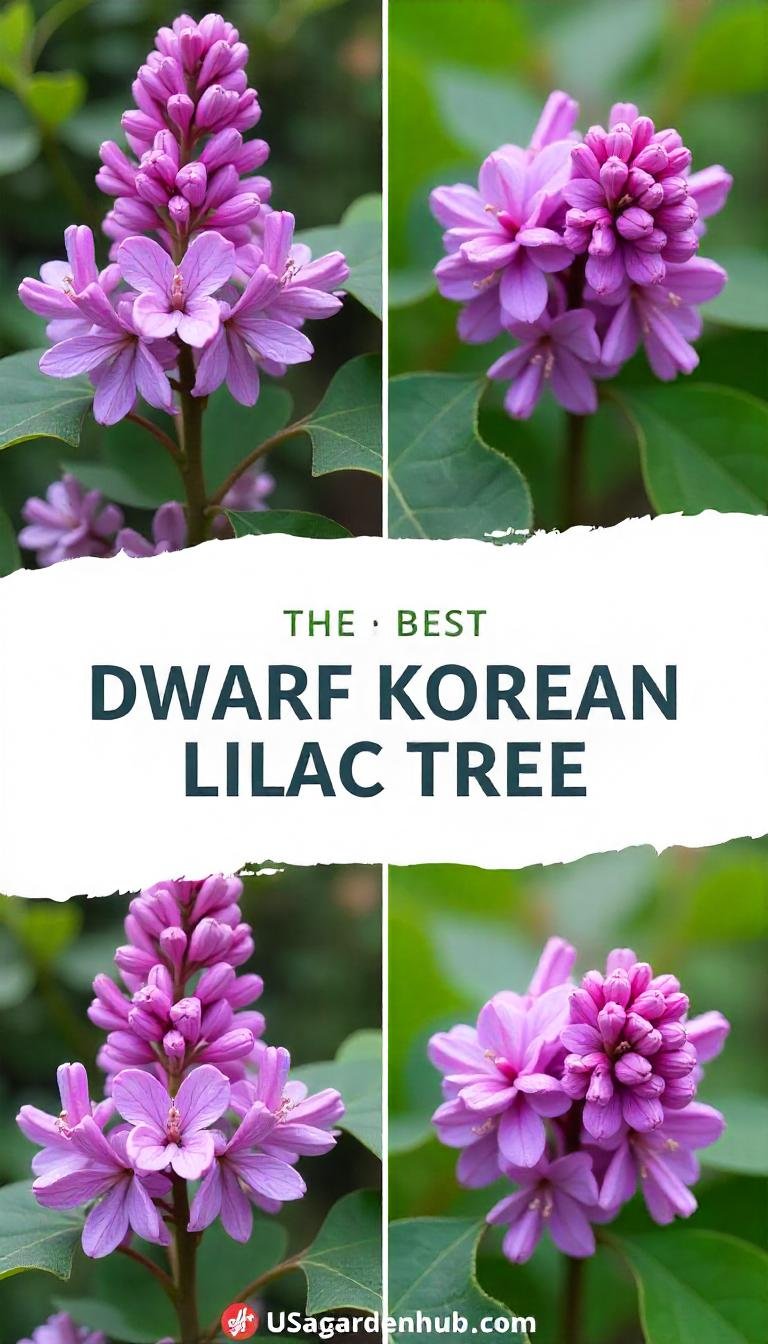Explore the beauty and charm of the Dwarf Korean Lilac tree. Learn how to grow, care for, and enjoy this fragrant ornamental tree, perfect for small spaces and gardens.
The Dwarf Korean Lilac tree (Syringa meyeri) is a stunning, compact ornamental tree that brings delightful fragrance and vibrant blooms to any garden.** In this guide, I’ll share expert tips on how to grow and care for this lovely tree, helping you incorporate it into your landscape effortlessly.
Here’s a detailed chart for the Dwarf Korean Lilac Tree:
| Category | Information |
|---|---|
| Botanical Name | Syringa meyeri ‘Palibin’ |
| Common Name | Dwarf Korean Lilac Tree |
| Plant Type | Deciduous Shrub/Small Tree |
| Hardiness Zone | USDA Zones 3–7 |
| Sun Exposure | Full sun |
| Soil Type | Well-draining, loamy or sandy soil |
| Watering | Moderate; keep soil moist, but not waterlogged |
| Growth Habit | Rounded, compact |
| Height/Spread | 4–6 feet tall, 5–7 feet wide |
| Special Features | Fragrant, lavender-pink flowers; attracts pollinators; compact and low-maintenance; deer-resistant |
Introduction to Dwarf Korean Lilac Tree

As a passionate gardener with years of experience, I can confidently say that the Dwarf Korean Lilac tree is a fantastic addition to any garden, especially for those with limited space. This tree is not only known for its beautiful purple flowers but also for its fragrant scent that attracts pollinators.
Characteristics of the Dwarf Korean Lilac Tree:
- Size: Typically grows to about 5-8 feet tall and wide.
- Flowers: Produces small, fragrant clusters of lavender-purple flowers in late spring.
- Foliage: Features dark green leaves that turn yellow in the fall.
- Hardiness: Thrives in USDA hardiness zones 3-7, making it suitable for a wide range of climates.
For more information on the Syringa genus, visit the Missouri Botanical Garden.
Growing Dwarf Korean Lilac Trees
Ideal Growing Conditions
To grow a healthy Dwarf Korean Lilac tree, consider the following conditions:
- Sunlight: Prefers full sun (at least 6 hours of direct sunlight per day).
- Soil: Thrives in well-draining, moderately fertile soil with a pH of 6.0-7.0. Sandy or loamy soil works best.
- Water: Regular watering is essential, especially during dry spells, but be careful not to overwater, as this can lead to root rot.
Planting Steps
- Timing: The best time to plant is in spring or early fall when temperatures are mild.
- Location: Choose a site with full sun and good air circulation.
- Planting Hole: Dig a hole that is twice as wide and the same depth as the root ball.
- Placement: Remove the tree from its container and gently loosen any tightly bound roots. Place it in the center of the hole, ensuring it sits at the same depth as it was in the pot.
- Backfill and Water: Fill the hole with soil, tamping it down gently. Water thoroughly to help settle the soil.
For detailed planting instructions, check out the Arbor Day Foundation’s planting guide.
Caring for Your Dwarf Korean Lilac Tree
Watering
- Water deeply during the first growing season to establish strong roots.
- Once established, the tree is relatively drought-tolerant but benefits from regular watering during dry periods.
Fertilizing
- Apply a balanced, slow-release fertilizer in early spring to encourage healthy growth.
- Avoid over-fertilizing, as this can lead to excessive foliage growth at the expense of flowers.
Pruning
- Prune immediately after blooming to maintain shape and encourage bushiness.
- Remove any dead or damaged branches to promote overall health.
Pest and Disease Management
While the Dwarf Korean Lilac tree is relatively pest-resistant, keep an eye out for:
- Powdery Mildew: Ensure good air circulation around the tree to prevent this fungal issue.
- Aphids: Treat with insecticidal soap or neem oil if infestations occur.
For more information on pest management, visit the University of Minnesota Extension.
Landscape Uses
The Dwarf Korean Lilac tree is versatile in the landscape and can be used in various ways:
- Specimen Tree: Plant as a focal point in a garden.
- Foundation Planting: Perfect for planting near the foundation of homes or buildings.
- Mixed Borders: Incorporate into mixed borders for seasonal interest and fragrance.
- Pollinator Garden: Attract bees and butterflies with its fragrant blooms.
Environmental Benefits
- Provides habitat and food for pollinators.
- Contributes to urban cooling and air purification.
Learn more about the ecological benefits of trees from the USDA Forest Service.
The Dwarf Korean Lilac tree is an excellent choice for gardeners looking to add beauty and fragrance to their outdoor spaces, even in compact areas. With its delightful blooms and manageable size, this tree can enhance your landscape for years to come. By following proper planting and care techniques, you can ensure a healthy and thriving Dwarf Korean Lilac tree that will bring joy to your garden.
For more in-depth information on lilac care, visit the International Lilac Society.